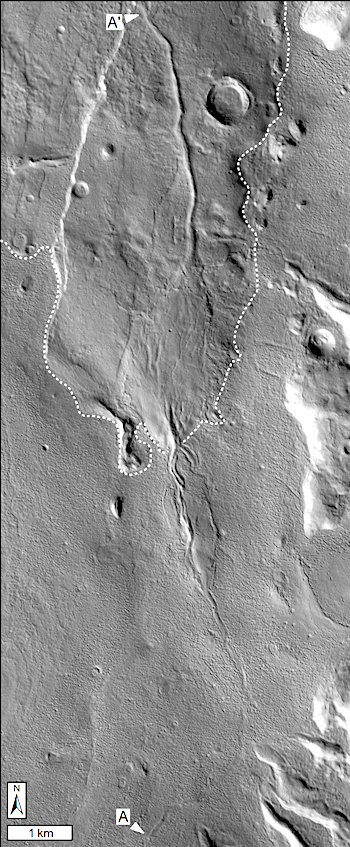 Planetary Geomorphology Image of the Month, March 1, 2018: Frances E.G. Butcher (Open University, Milton Keynes, UK). Thousands of putative debris-covered glaciers in Mars’ middle latitudes host water ice in volumes comparable to that of all glaciers and ice caps on Earth, excluding the Greenland and Antarctic ice sheets (Levy et al., 2014). These glaciers formed within the last 100 million to 1 billion years of Mars’ geological history (Berman et al., 2015), a period that is thought to have been similarly cold and hyper-arid to present-day Mars.
Planetary Geomorphology Image of the Month, March 1, 2018: Frances E.G. Butcher (Open University, Milton Keynes, UK). Thousands of putative debris-covered glaciers in Mars’ middle latitudes host water ice in volumes comparable to that of all glaciers and ice caps on Earth, excluding the Greenland and Antarctic ice sheets (Levy et al., 2014). These glaciers formed within the last 100 million to 1 billion years of Mars’ geological history (Berman et al., 2015), a period that is thought to have been similarly cold and hyper-arid to present-day Mars.
This is broadly corroborated by a sparsity of evidence for melting of these geologically ‘young’ mid-latitude glaciers, which suggests that they have always been entirely frozen to their beds in ‘cold-based’ thermal regimes, and haven’t generated meltwater (e.g. Marchant and Head, 2007). Nevertheless, this months’ planetary geomorphology image provides evidence for melting of one such glacier.
Image 1 [right] shows a recently-discovered ‘esker’ emerging from the tongue of an existing (~110 million year-old) debris-covered glacier in the Tempe Terra region of Mars’ northern mid-latitudes (Butcher et al., 2017). Image 2 shows an annotated oblique 3D view of the same feature as Image 1. Eskers are snake-like ridges of sediment deposited by glacial meltwater as it flows through drainage tunnels within glacial ice (e.g. Perkins et al., 2016). As their parent glacier retreats, esker ridges are left in the landscape as sinuous ridges tracing the former glacial plumbing system. [More at link]








